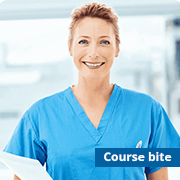Hypo- and Hyperglycaemia




About the course
This course is part of the APNA-accredited “Diabetes in Practice for Nurses” program and offers a practical option for those not ready to commit to the entire 12-hour program.
In this 1-hour segment you will about the signs, symptoms, causes and management of hyperglycaemia and hypoglycaemia. This course also covers diabetic ketoacidosis and sick day management.
How does this course work?
- Once you enrol online you will automatically gain access to your course in our e-Learning platform. Everything you need to complete the course is available online, with 24/7 accessibility.
- This segment of the Diabetes in Practice for Nurses course consists of 3 modules. You can complete each module at your own pace.
- There are 2 multiple choice assessments. The results are shown immediately.
- Once you have completed the modules, passed both assessments and completed the course feedback survey you will be able to download your ‘Certificate of Completion’.
- You will have 12-months access to the course from your enrolment date. This enables you to learn on-demand, at your own pace, and at time that suits you.
Module 1: Introduction
- Recognise that diabetes is a significant health problem in Australia and why it is important to follow this training.
Module 5: Acute complications – hyperglycaemia
- List the signs and symptoms and causes of hyperglycaemia and how it is managed.
- Describe what diabetic ketoacidosis is and the factors that cause it.
Module 6: Acute complications – hypoglycaemia
- List the signs and symptoms and causes of hypoglycaemia and how it is managed.
- Describe the treatment and management for mild, moderate and severe hypoglycaemia.
- Anaesthesia | Paediatrics | Pharmacokinetic,Pharma...
- Posted By eIntegrity Healthcare e-Learning
- Posted Date: 2024-11-18
- Location:Online
- This session will provide an overview of pharmacokinetic (PK) maturation during infancy and the use of size models to describe PK differences between children and adults. It will go on to describe known pharmacodynamic (PD) differences and consider the im
- Anaesthesia | Paediatrics | Opioids In Paediatrics...
- Posted By eIntegrity Healthcare e-Learning
- Posted Date: 2024-11-18
- Location:Online
- This session looks at practical opioid pharmacology applied to the clinical use of different agents for neonates, infants and small children.
- Anaesthesia | Paediatrics | Advanced Paediatric Li...
- Posted By eIntegrity Healthcare e-Learning
- Posted Date: 2024-11-18
- Location:Online
- This session addresses the advanced management of the critically ill child and the child in cardiac arrest.
- Anaesthesia | Paediatrics | Head Injury
- Posted By eIntegrity Healthcare e-Learning
- Posted Date: 2024-11-18
- Location:Online
- This session describes the principles of stabilisation and management of a child with a head injury and how this differs from the management of an adult patient. This includes methods of assessment, effects and management of raised intracranial pressure,
- Anaesthesia | Paediatrics | Multiply Injured Child...
- Posted By eIntegrity Healthcare e-Learning
- Posted Date: 2024-11-18
- Location:Online
- This session looks at the initial management and stabilization of the multiply injured child with reference to published trauma guidelines.

